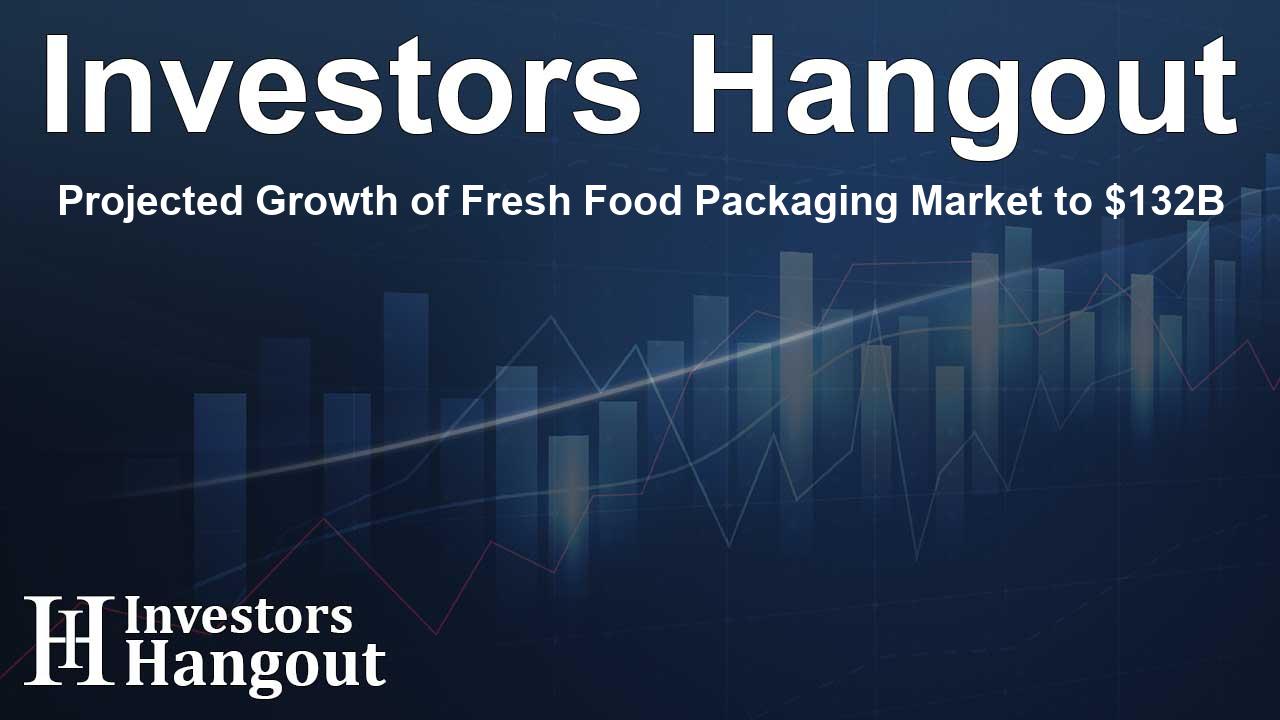Projected Growth of Fresh Food Packaging Market to $132B

Overview of the Fresh Food Packaging Market
The fresh food packaging market is poised for substantial growth, with estimates suggesting it could soar to USD 132.08 billion by the year 2034. Presently, the market is valued at approximately USD 98.18 billion as of recent reports, indicating strong potential for its expansion over the next decade. This growth is significantly influenced by several key players in the market who are actively pursuing inorganic growth strategies, such as partnerships and acquisitions, aimed at fostering new technologies in food packaging.
Importance of Fresh Food Packaging
Fresh food packaging is essential for preserving the quality and safety of perishables, including fruits, vegetables, meat, and dairy products. The primary role of this type of packaging is to keep food safe and appealing while prolonging its shelf life. Fresh food packaging effectively protects against various forms of contamination, which includes microbial, chemical, and physical threats.
This specialized packaging helps to slow down spoilage caused by factors like oxygen exposure, bacteria, moisture, and light. By keeping food fresh for longer periods, it significantly reduces food waste, enhances convenience for consumers, and ensures that vital information regarding expiration dates and nutrition facts is readily available. Additionally, attractive packaging design enhances marketability and consumer appeal.
Key Materials in Fresh Food Packaging
Plastic Films
Plastic films, particularly Polyethylene (PE) and Polypropylene (PP), are among the most commonly used materials due to their flexibility and resistance to moisture. They are produced through techniques like extrusion and blown film, resulting in thin, flexible films ideal for wrapping fresh produce.
Rigid Containers
Rigid containers made from materials such as Polystyrene (PS) and Polyethylene Terephthalate (PET) are molded into trays and clamshell designs through thermoforming processes. These containers offer excellent structural support and are commonly used for products like berries and mushrooms.
Paper and Board
There is a growing trend towards sustainable packaging options, with materials like bagasse (sugarcane fiber) and recycled paperboard being leveraged. These materials are often molded and pressed into trays and wraps and are increasingly favored for their environmental benefits.
Emerging Trends in the Fresh Food Packaging Market
In recent years, the fresh food packaging market has experienced several transformative trends:
Eco-Friendly and Sustainable Practices
Consumer demand for sustainability has led to a heightened interest in biodegradable, compostable, and recyclable materials. Companies are transitioning towards packaging solutions that are lightweight and plastic-free, using eco-friendly alternatives like paper and bioplastics.
Smart Packaging Innovations
Smart packaging introduces advanced features such as QR codes and time-temperature indicators that help in monitoring food freshness and safety, ensuring a superior consumer experience.
Modified Atmosphere Packaging (MAP)
Modified Atmosphere Packaging is swiftly gaining traction, particularly in the emphasis on extending the shelf life of fresh meat, seafood, and vegetables. By altering the internal composition of gases in the packaging, MAP effectively slows down spoilage.
Convenient and On-the-Go Solutions
Modern consumers prefer easy-to-use packaging that accommodates busy lifestyles. This has led to the development of resealable and single-serve packaging options to cater to the growing demand for on-the-go meals and snacks.
Challenges Facing the Fresh Food Packaging Market
Labelling Issues
Labelling is a significant hurdle, as improperly fitting labels can hinder product visibility and compliance. Ensuring that labels complement the packaging without overwhelming the product is a delicate balance.
Regulatory Compliance
Meeting stringent regulations concerning material safety and food contact standards is increasingly complex. These evolving compliance requirements can pose additional costs and limit innovation within the industry.
Competitive Pressure
The marketplace is incredibly competitive, where numerous players vie for market share, leading to pricing pressures that may stifle investment in quality and innovation.
Regional Dynamics and Market Insights
The Asia Pacific region presently leads the fresh food packaging market, driven by a burgeoning population and a rising demand for freshly packaged foods. The rapid urbanization in countries like China and India is further pushing the demand for convenient and safe food packaging solutions as more consumers lean towards packaged food for health and safety concerns.
Moreover, North America is expected to observe the fastest growth rate, propelled by consumer expectations for convenience in ready-to-eat options. The presence of dominant retail chains and stringent food safety regulations necessitate the adoption of advanced packaging technologies to ensure high-quality food is available for consumers.
Conclusion
The fresh food packaging market presents a plethora of opportunities for innovation and advancement, particularly as consumer preferences continue to evolve. By focusing on sustainability, smart packaging, and maintaining compliance with regulations, manufacturers can better meet the demands of a growing customer base and ensure they remain competitive in a rapidly shifting market landscape.
Frequently Asked Questions
What is the projected growth of the fresh food packaging market?
The fresh food packaging market is projected to grow significantly, reaching USD 132.08 billion by the year 2034.
What are the primary materials used in fresh food packaging?
The primary materials include plastic films, rigid containers, and sustainable options like paper and board.
What are some key trends affecting the market?
Key trends include the rise of eco-friendly packaging, smart packaging innovations, and the increasing demand for convenience in food options.
What challenges does the fresh food packaging market face?
Challenges include labelling issues, stringent regulatory compliance, and intense competition driving pricing pressures.
Which region currently leads the fresh food packaging market?
The Asia Pacific region currently leads the market, followed closely by North America, driven by changing consumer preferences and urbanization.
About The Author
Contact Logan Wright privately here. Or send an email with ATTN: Logan Wright as the subject to contact@investorshangout.com.
About Investors Hangout
Investors Hangout is a leading online stock forum for financial discussion and learning, offering a wide range of free tools and resources. It draws in traders of all levels, who exchange market knowledge, investigate trading tactics, and keep an eye on industry developments in real time. Featuring financial articles, stock message boards, quotes, charts, company profiles, and live news updates. Through cooperative learning and a wealth of informational resources, it helps users from novices creating their first portfolios to experts honing their techniques. Join Investors Hangout today: https://investorshangout.com/
The content of this article is based on factual, publicly available information and does not represent legal, financial, or investment advice. Investors Hangout does not offer financial advice, and the author is not a licensed financial advisor. Consult a qualified advisor before making any financial or investment decisions based on this article. This article should not be considered advice to purchase, sell, or hold any securities or other investments. If any of the material provided here is inaccurate, please contact us for corrections.
